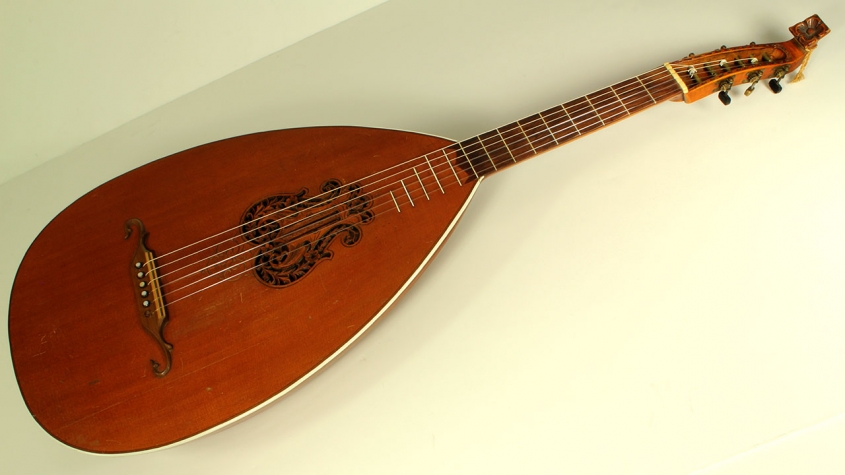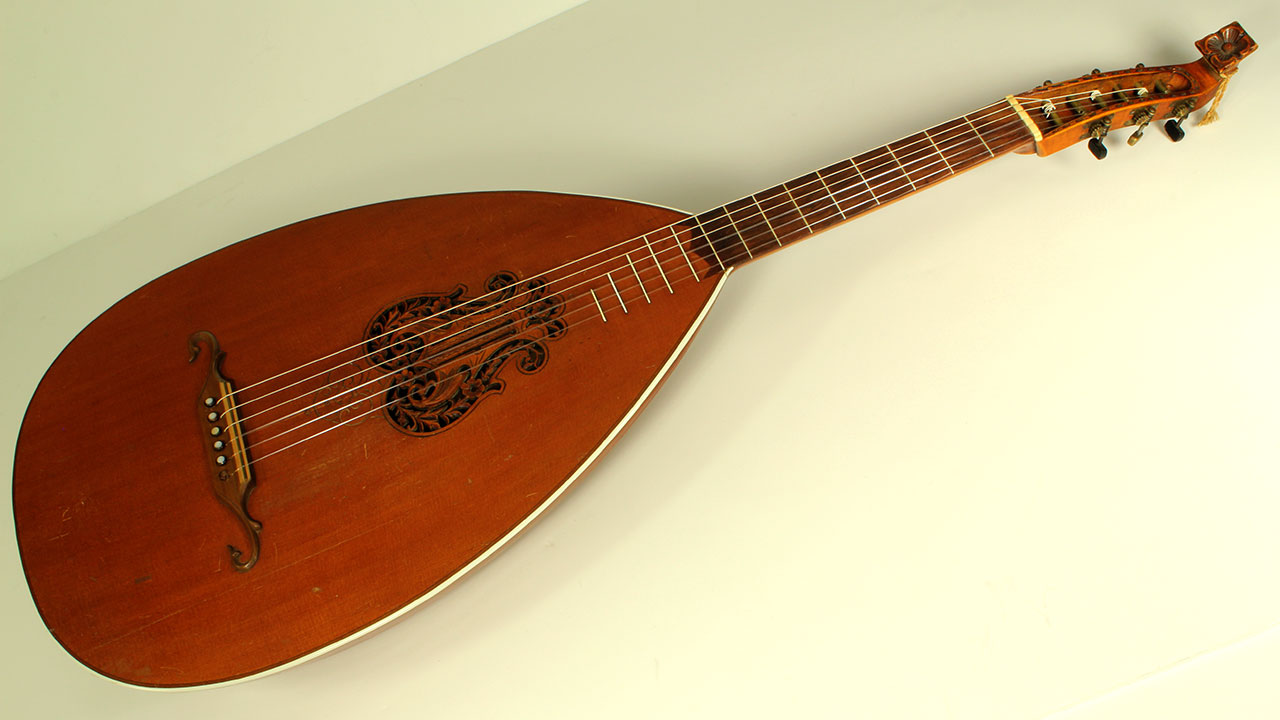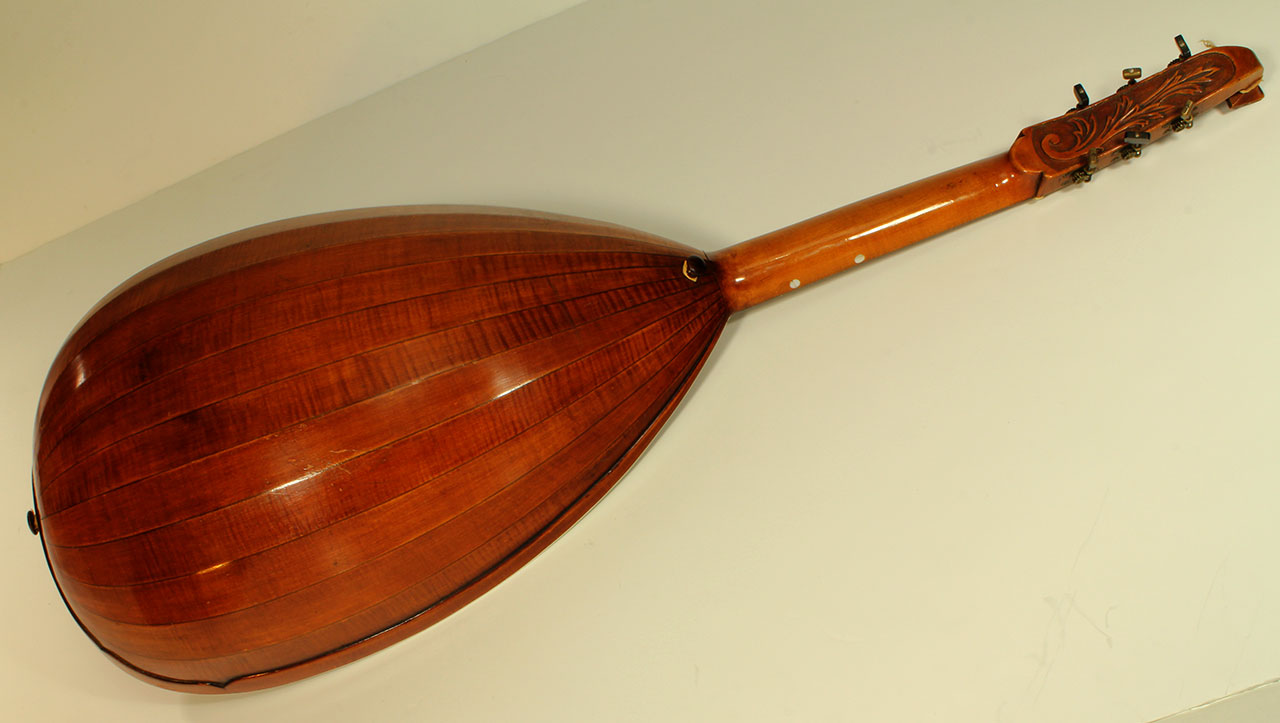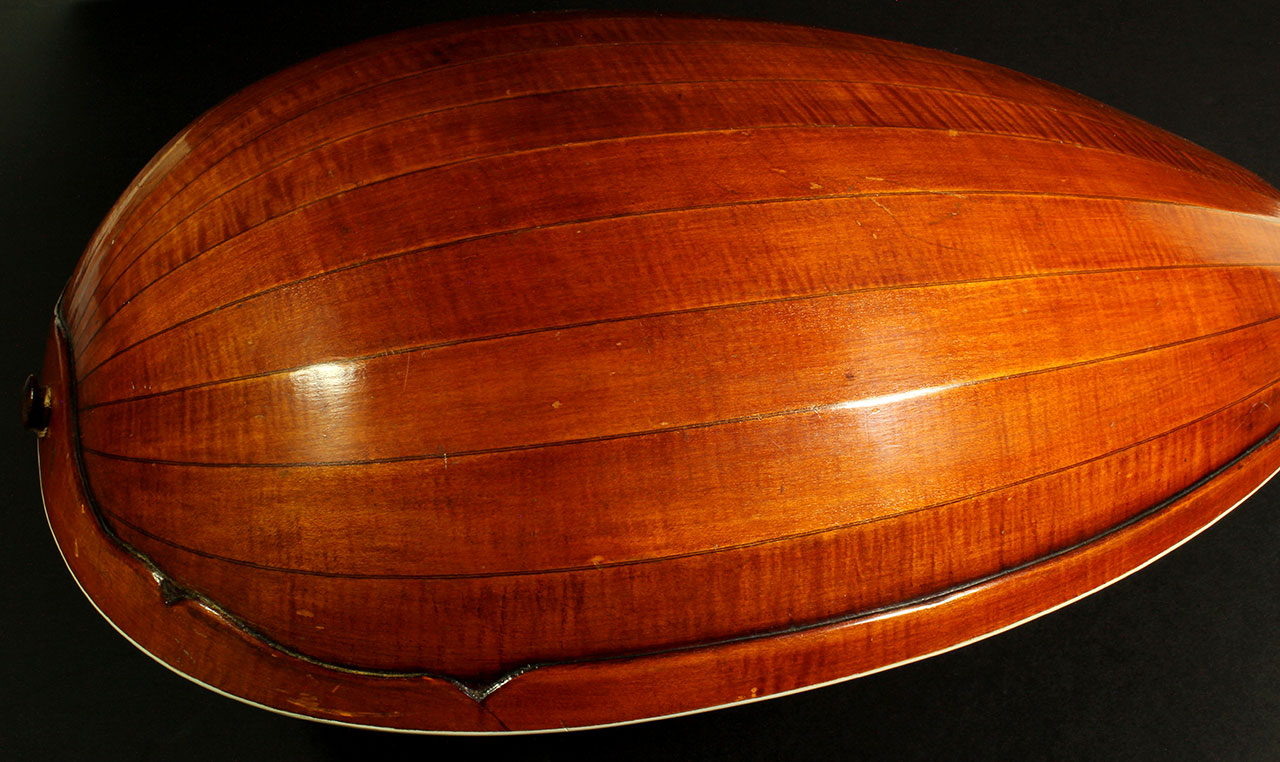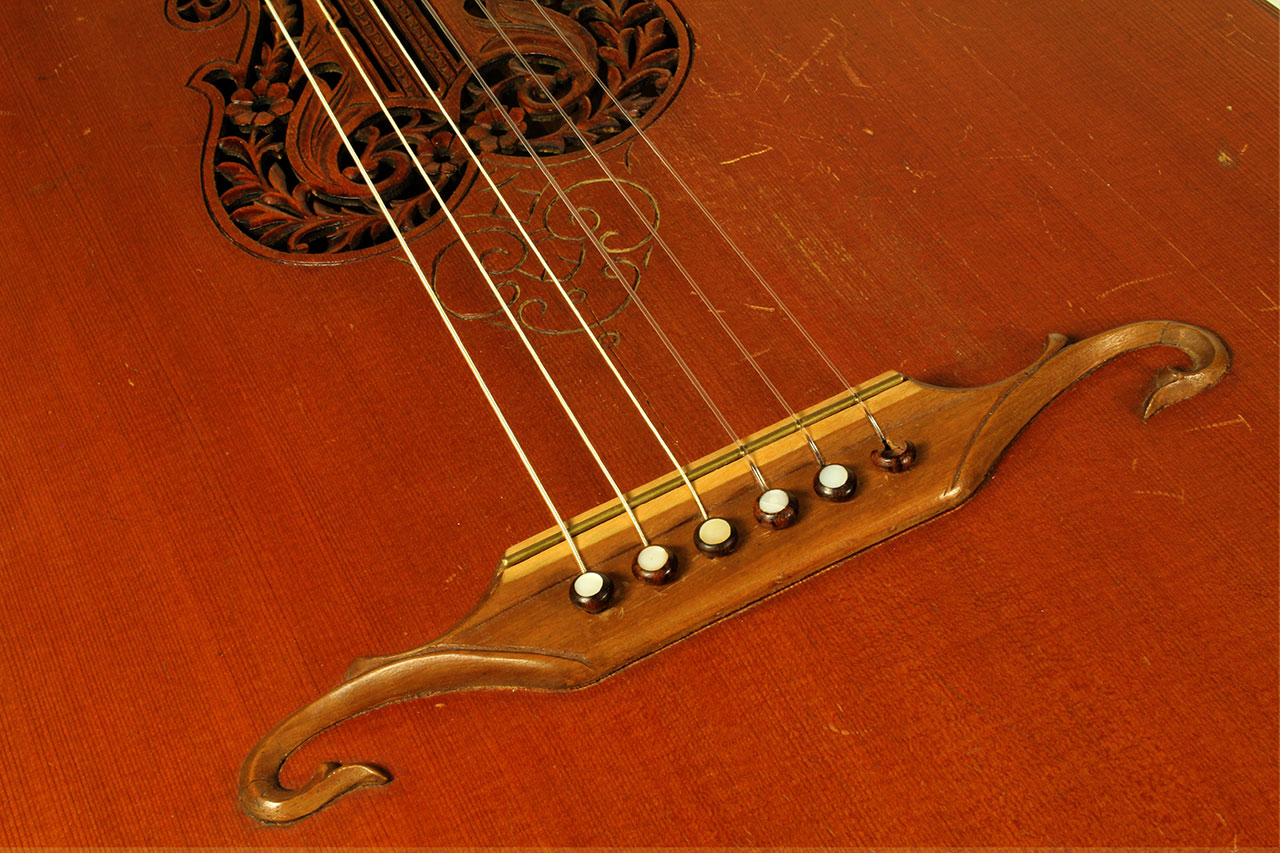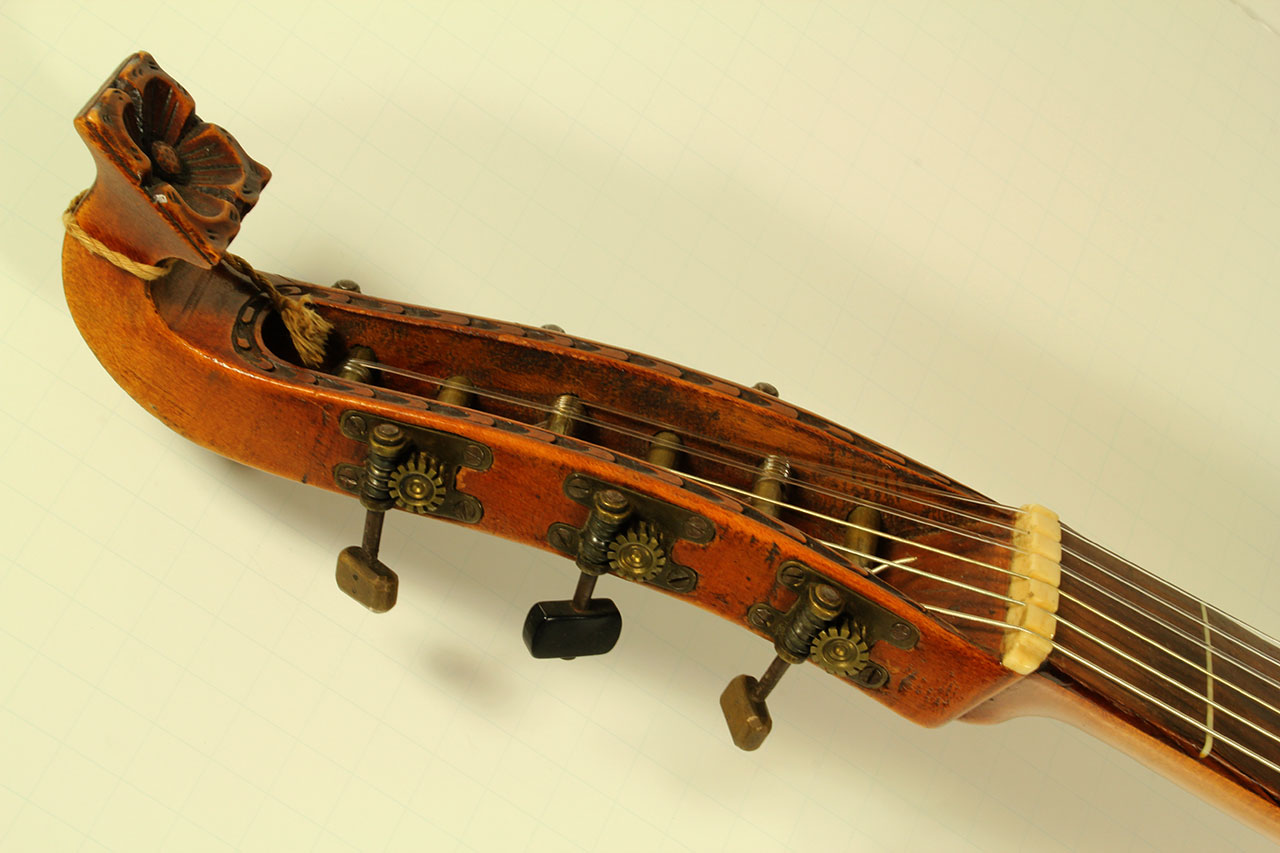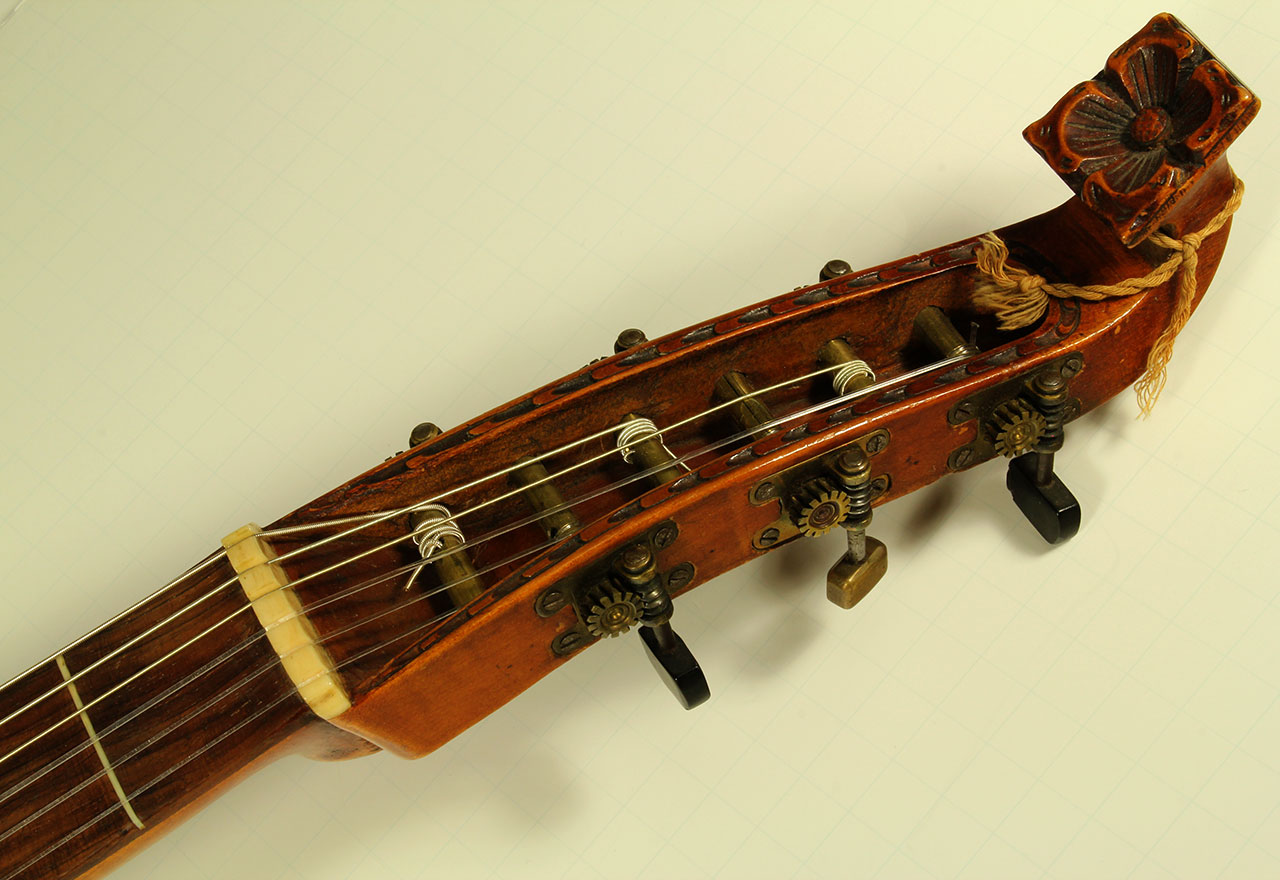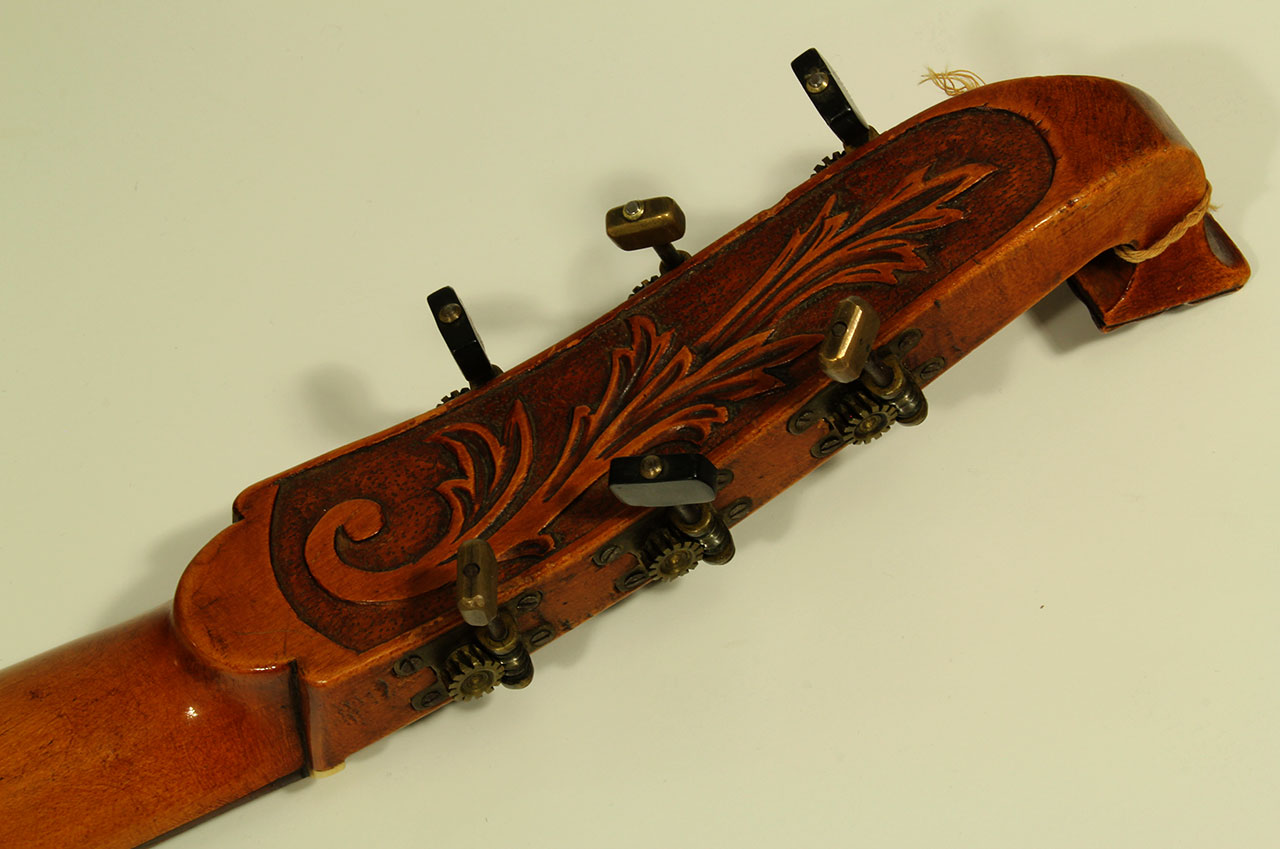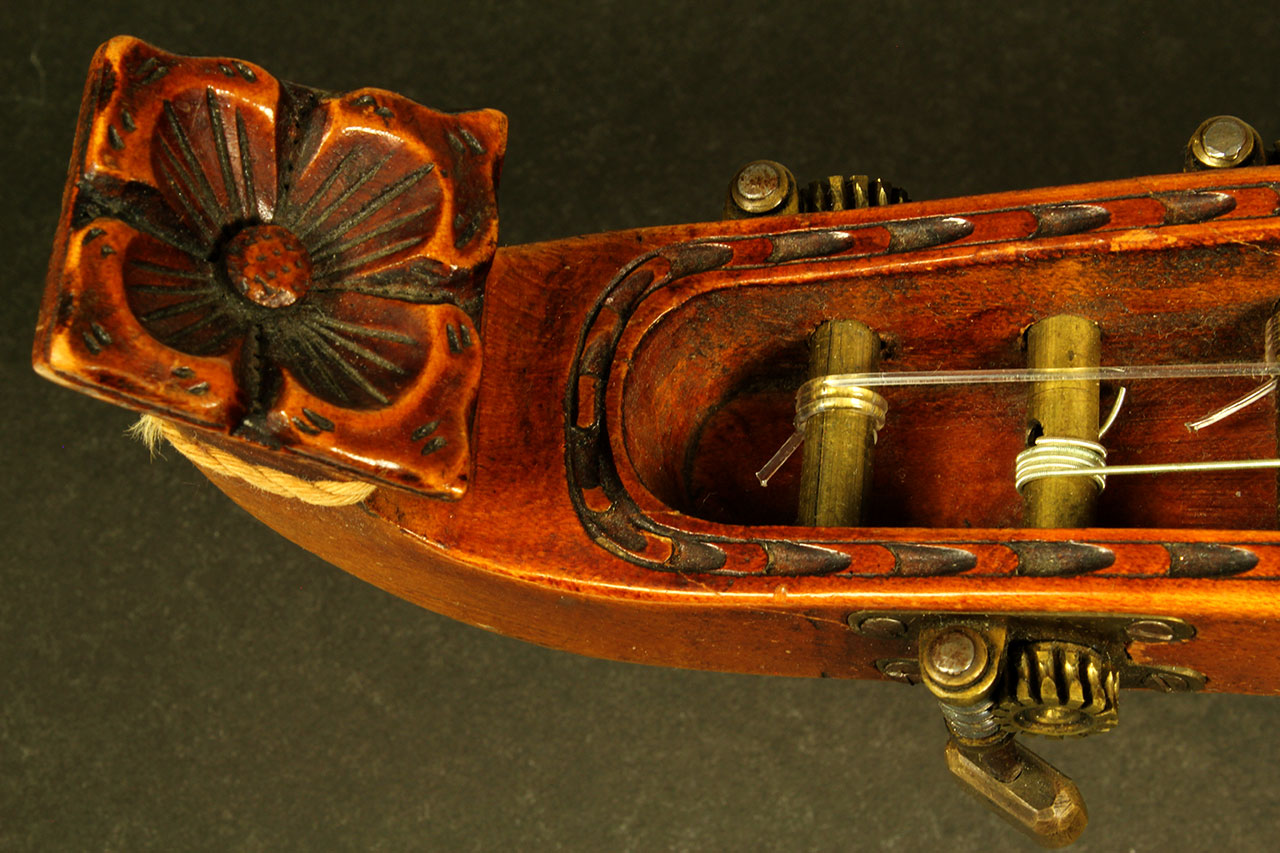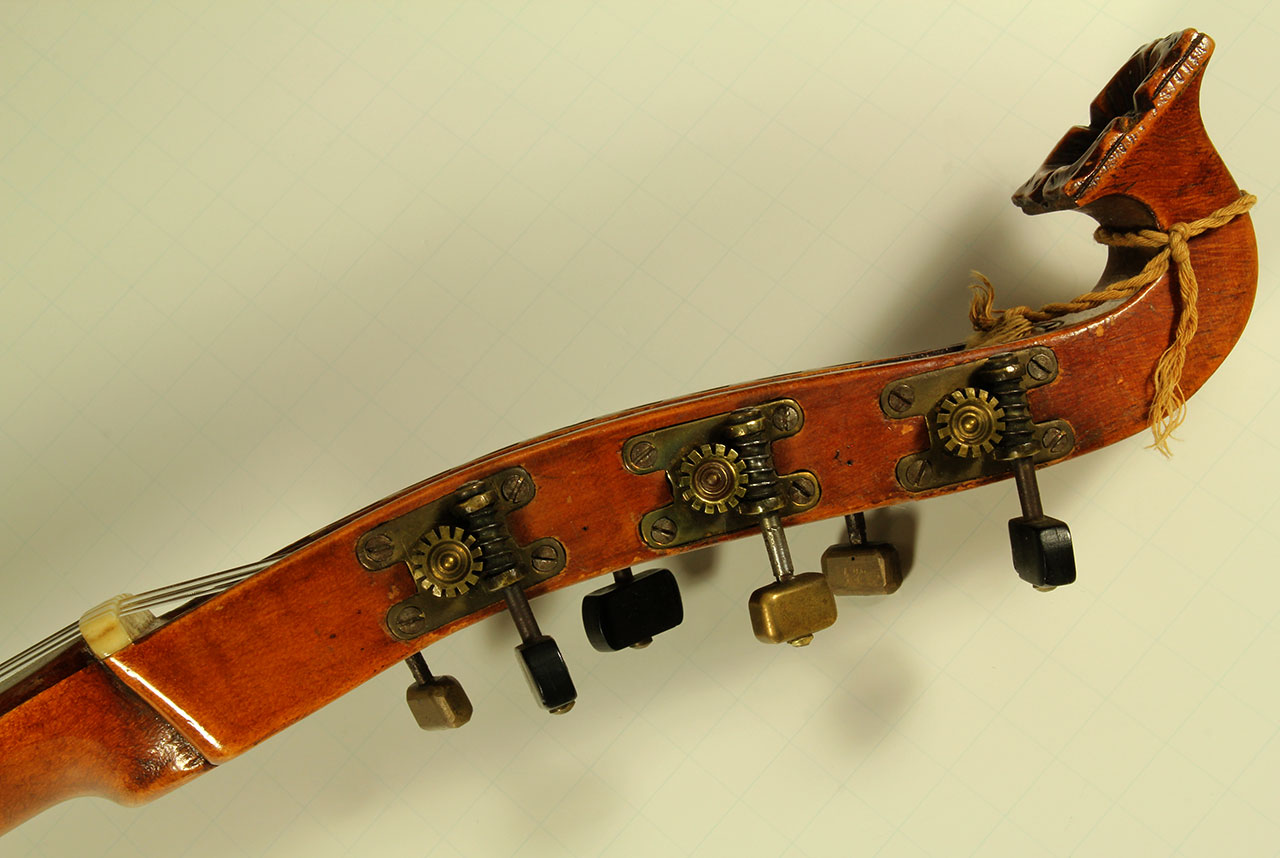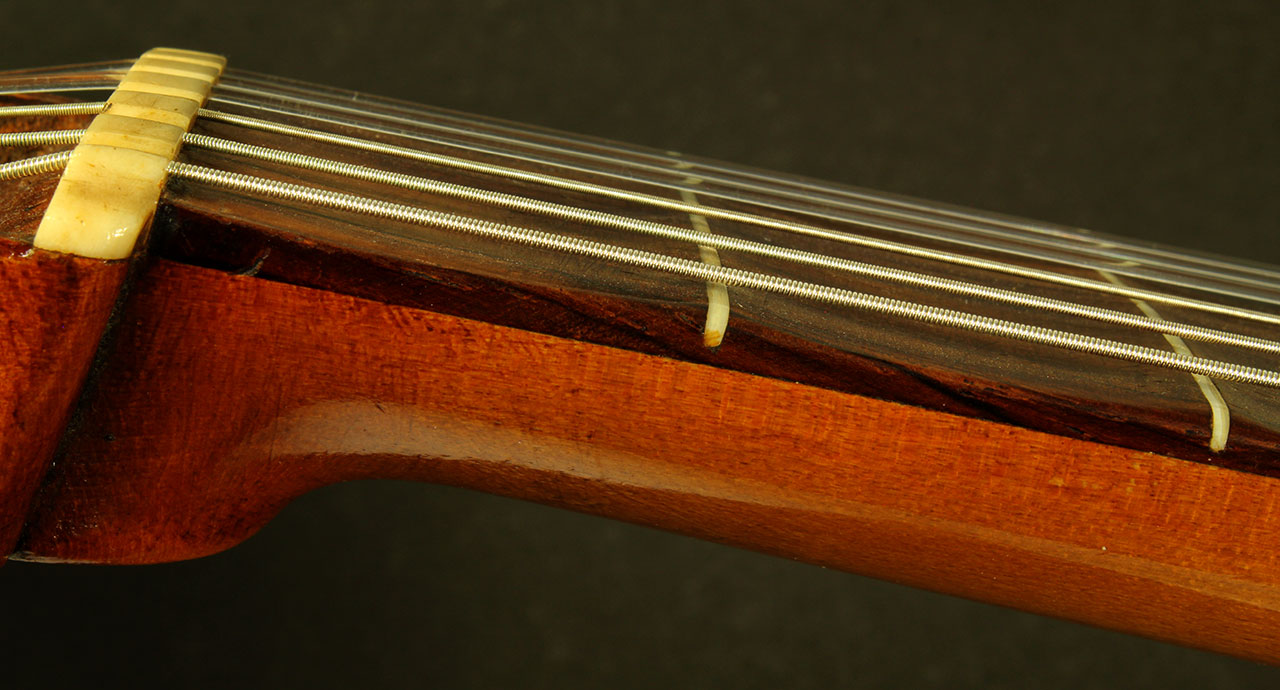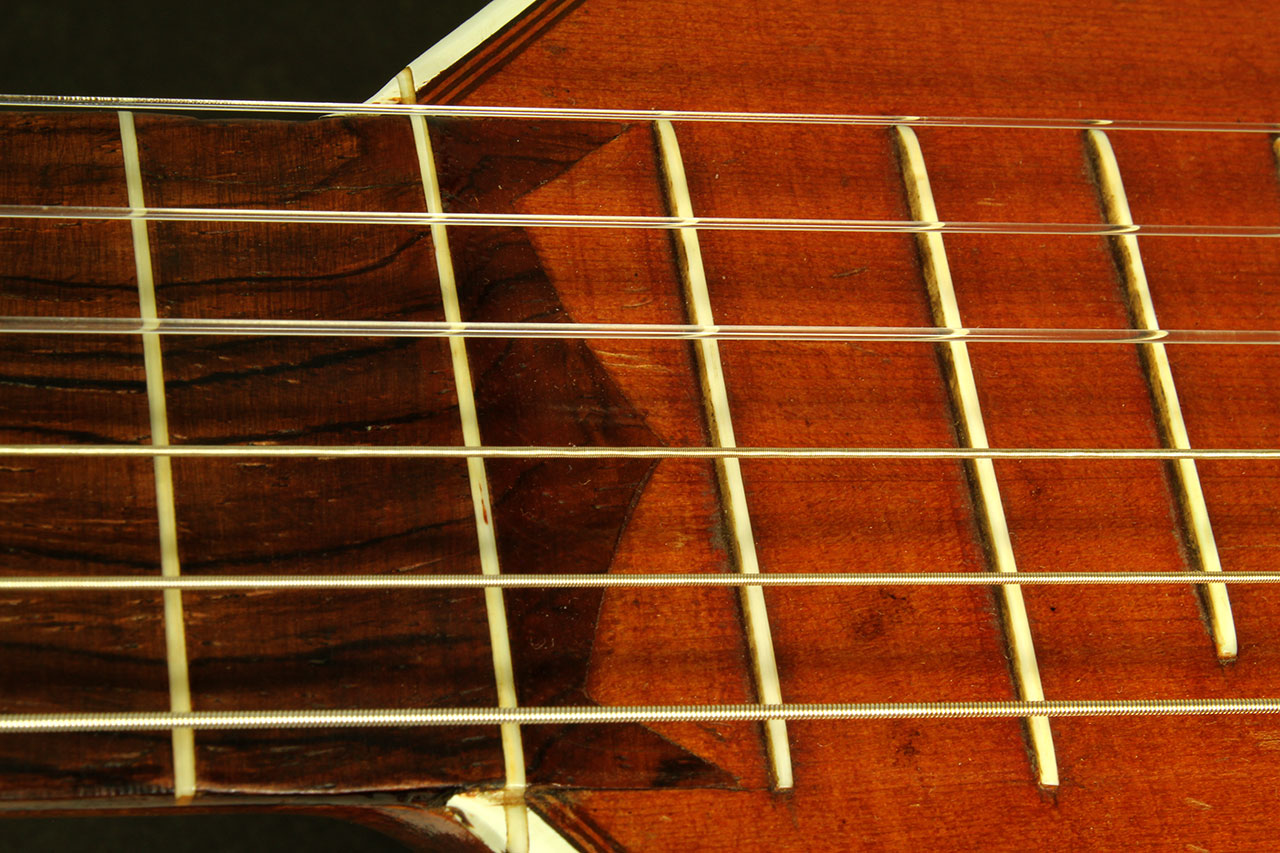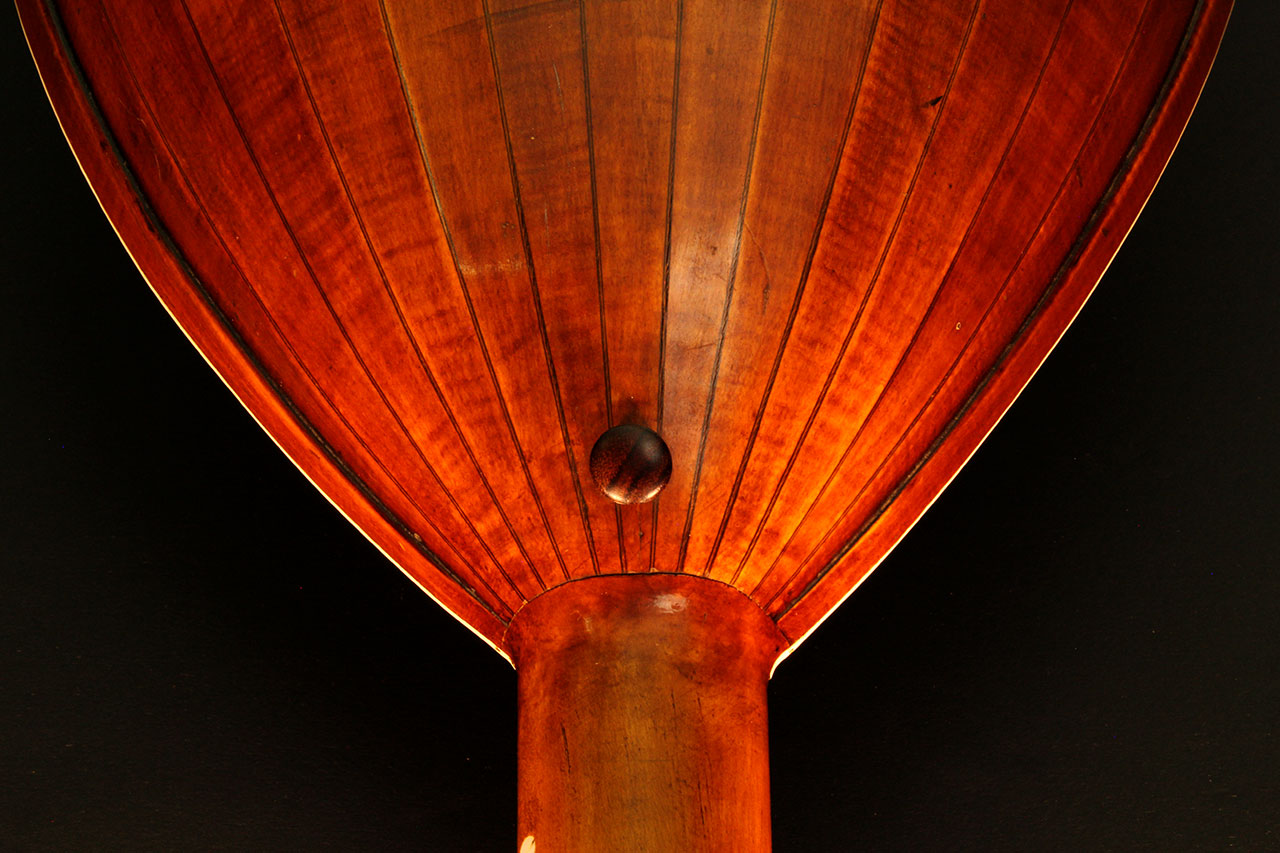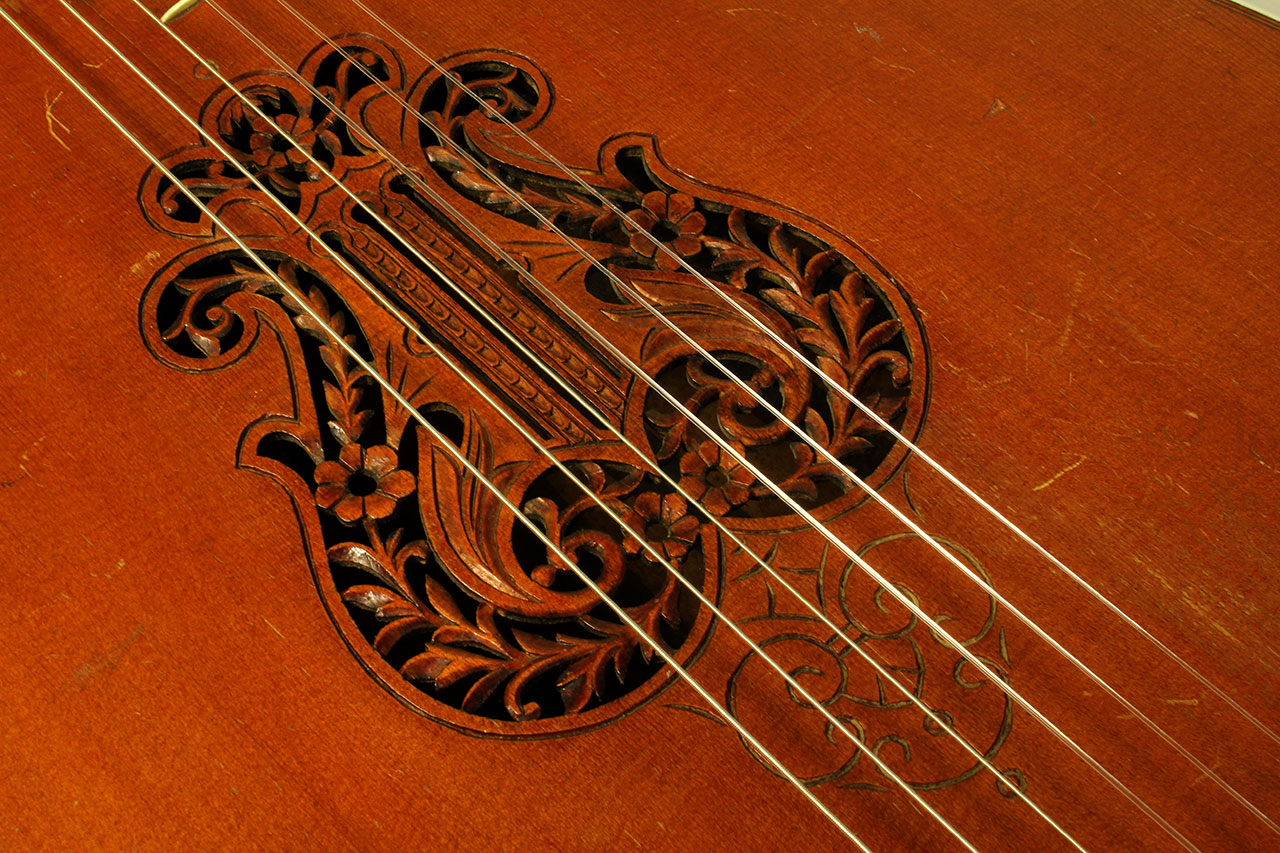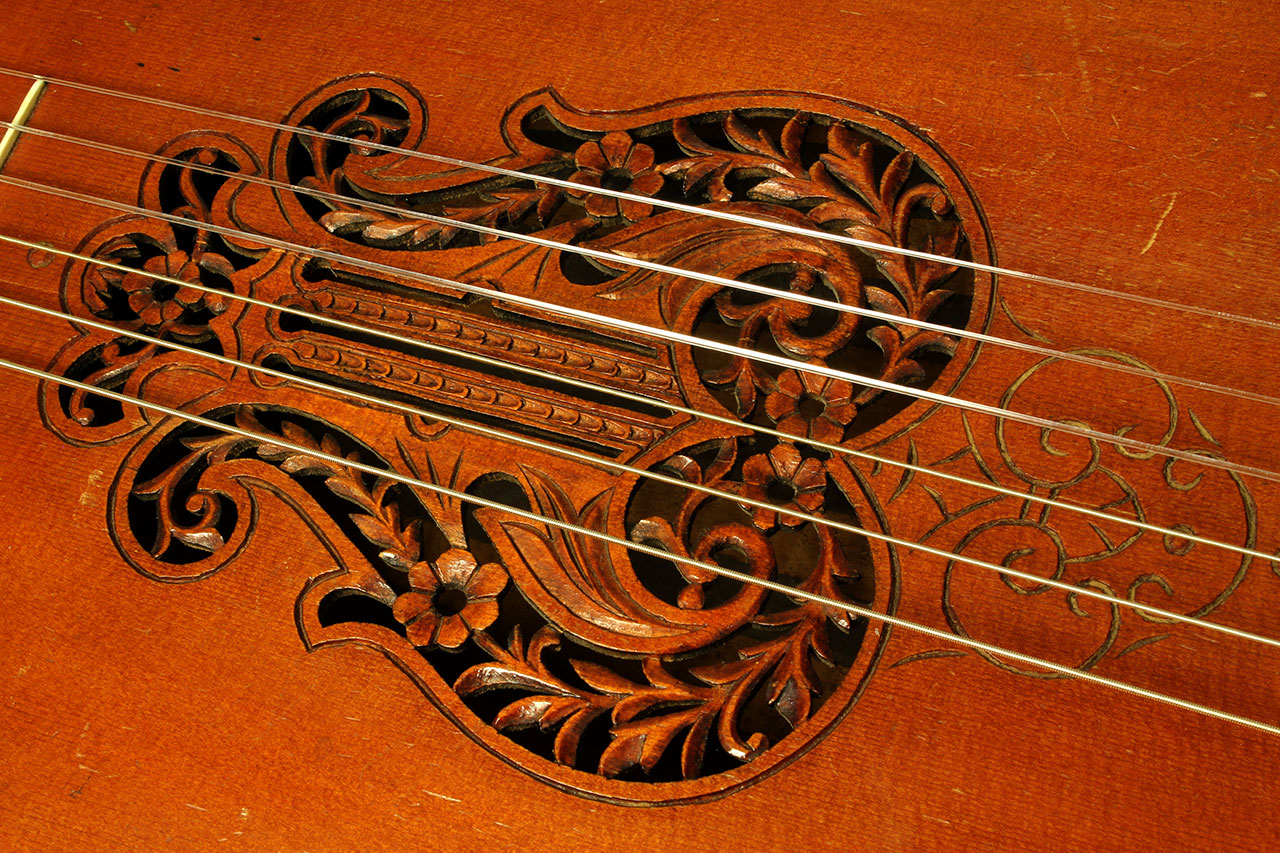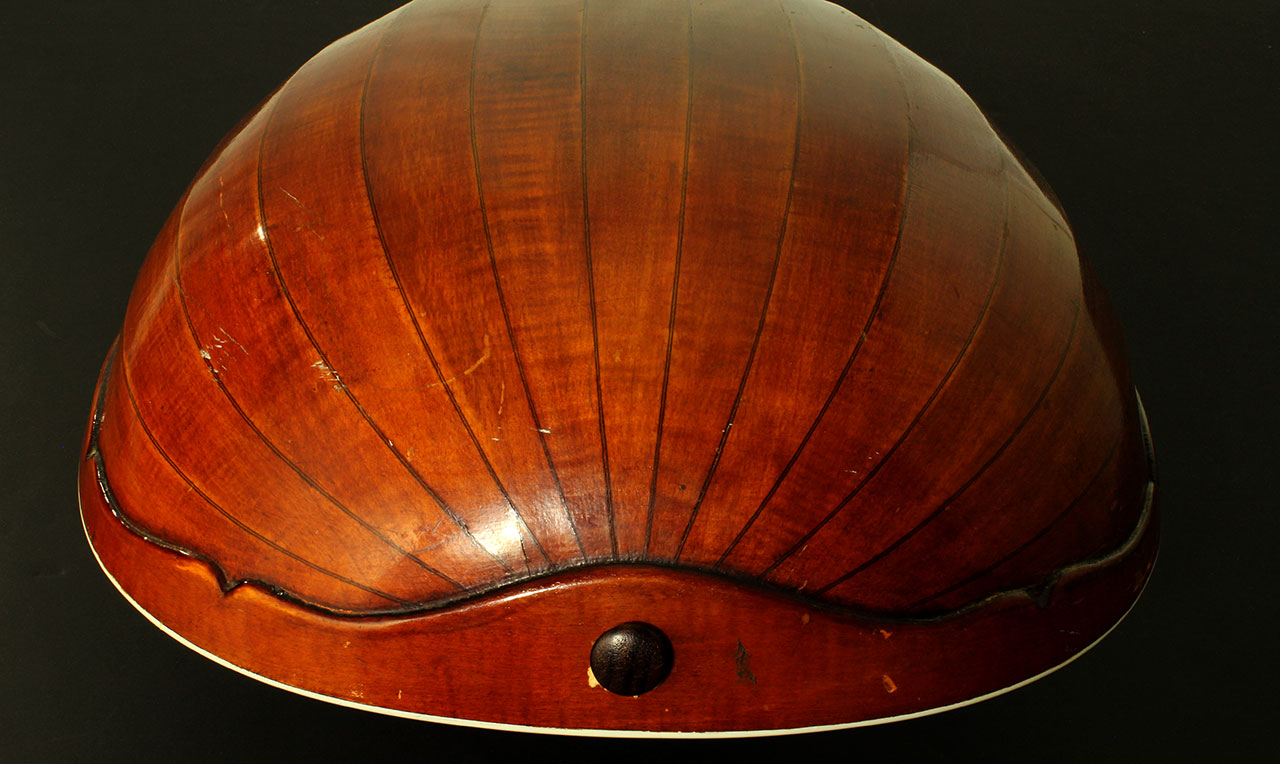| Serial Number | N/A, but built in Germany in the 1920’s. |
| Pricing | $999 CND with bag case. |
| Neck | Possibly Yew, with a scalloped rosewood fingerboard. Two pearl dots are mounted on the bass side of the neck at the 5th and 7th positions. The head has floral motif carvings. |
| Frets | Frets are inlaid into the scalloped fingerboard, |
| Body | The bound top appears to be cedar, and the ribs are curly maple. The bowl back uses the glue-and-parchment technique to obtain the concave shape that helps give strength and stability. The top has had a split and has some wear marks from playing. The rose is carved in a lyre shape with a second engraving below it. |
| Finish | Hand finished with lacquer or shellac. |
| Hardware/electronics | Original tuning gears with some replaced buttons. The bridge has been shaved somewhat, and has a wire saddle. |
| Playability/Action | This instrument plays quite well. It’s got a full, rich sound and has a good amount of volume. |
| Case | Bag case included. |
| Comments | During the 1920’s, many European countries began to look again to their cultural histories. During the 1800s, the Lute virtually disappeared as an instrument – there were very few builders, and construction methods were lost, though there was a large amount of music available. The revival in the early 20th century produced many new instruments as builders tried to re-discover techniques and adapt to more modern needs. This example combines the coursing of a guitar with the general construction of a lute. It’s in good playable shape with a good sound. |
You can preview our videos now on Our YouTube Channel!
You can now Visit our Facebook page!
